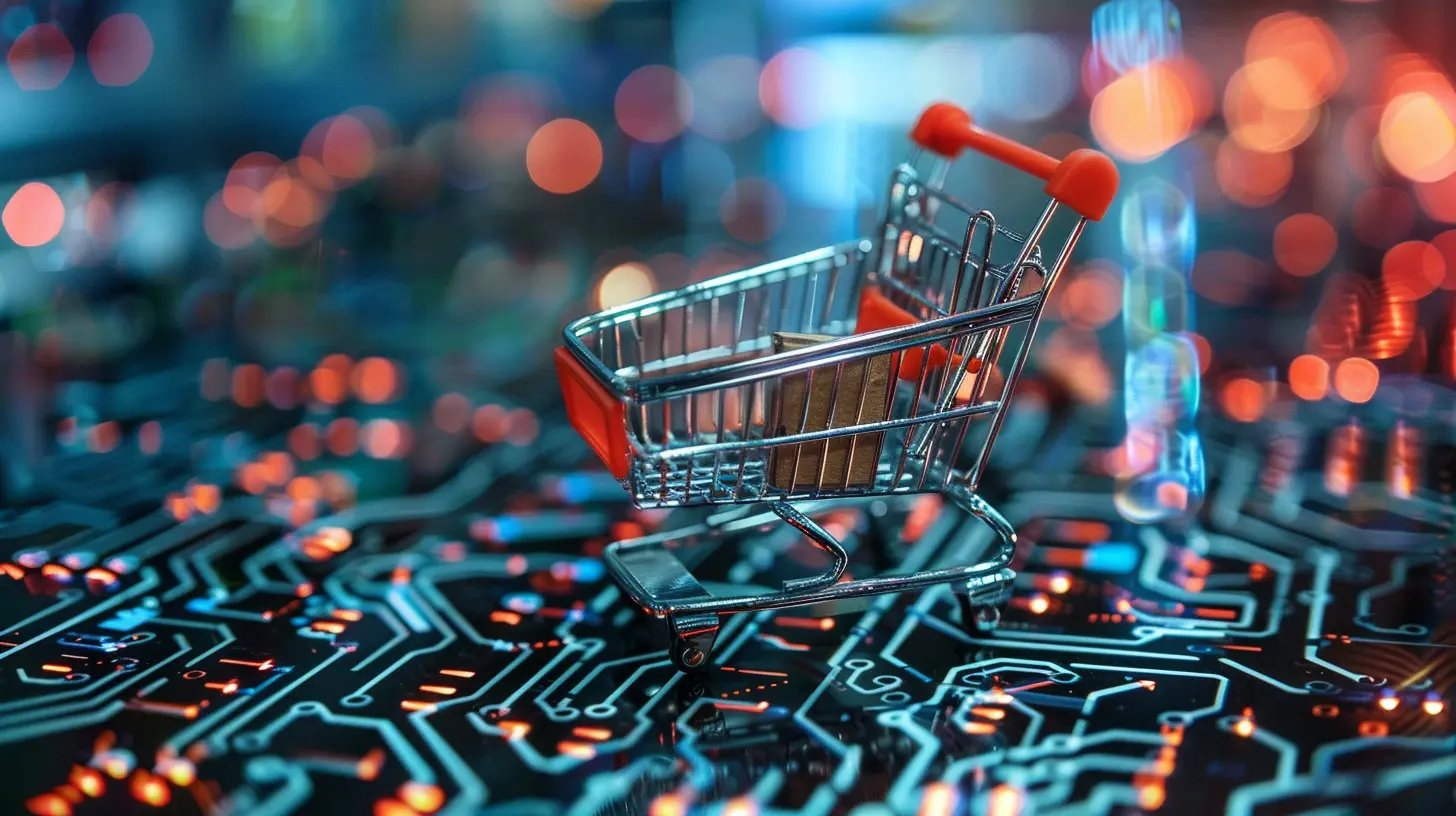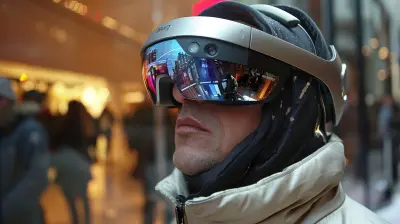How Retail is Evolving with Big Data Insights
2 May 2025
The retail industry is undergoing a massive transformation, and if you’ve been paying attention, you’ll know that Big Data is at the heart of it all. Retailers have access to more information than ever before, and they're using it to reshape how they do business. From predicting customer behavior to optimizing supply chains, data is the new currency in retail. But how exactly is Big Data changing the game? Let’s dive into the details and explore how retail is evolving with Big Data insights.

What is Big Data?
Before we jump into the retail world, let’s clarify what we mean by Big Data. In simple terms, Big Data refers to the vast amounts of information that businesses generate daily. This data comes from a variety of sources: online transactions, social media activity, customer reviews, loyalty programs, and even in-store sensors.And it’s not just about collecting data; it’s about analyzing it in ways that lead to actionable insights. Think of Big Data as a treasure chest, but you need the right tools (and the right mindset) to unlock its value. Retailers who can sift through this mountain of information can make better decisions, streamline operations, and ultimately offer a better experience to their customers.

How Big Data is Transforming Retail
1. Personalized Shopping Experiences
Let’s face it: no one wants to feel like just another number. Customers want to feel special, and Big Data is helping retailers achieve exactly that. By analyzing customer data—such as past purchases, browsing habits, and even social media activity—retailers can offer highly personalized shopping experiences.Ever wondered how Amazon always seems to recommend the perfect product? That’s Big Data in action. Retailers can now segment their customers into specific groups based on preferences, buying habits, and even location. This allows them to send targeted offers and suggestions that are much more likely to resonate with individual shoppers.
Imagine walking into your favorite store and receiving a notification on your phone offering you a discount on items you’ve been eyeing online. That’s not a coincidence—that’s Big Data working its magic to create a personalized shopping experience just for you.
2. Predictive Analytics and Demand Forecasting
One of the most powerful applications of Big Data in retail is predictive analytics. Retailers can now forecast demand with a level of accuracy that wasn’t possible before. By analyzing historical sales data, current market trends, and even factors like weather or local events, retailers can predict what products will be in demand in the near future.For example, let’s say you own a clothing store. Data from previous years shows that sales of winter coats peak in mid-October. But this year, weather forecasts predict an unusually warm fall. Using Big Data, you can adjust your inventory strategy and delay bulk coat shipments, avoiding excess stock and markdowns. This kind of foresight was nearly impossible before, but with Big Data, it’s becoming the standard.
3. Optimizing Supply Chains
Supply chains are the backbone of retail, and Big Data is helping to make them more efficient than ever. Retailers can now monitor every aspect of their supply chain in real-time, from production to distribution to the customer’s doorstep. This level of visibility allows businesses to identify bottlenecks, predict delays, and optimize routes for faster and cheaper deliveries.Let’s say a retailer notices that a particular supplier consistently delivers late. By analyzing supplier performance data, they can make data-driven decisions to switch suppliers or renegotiate delivery terms. Or, if a retailer knows that a certain product is selling faster than expected, they can adjust their supply orders in real-time to avoid stockouts. Big Data is turning supply chain management from a reactive process into a proactive one.
4. Enhancing Customer Loyalty Programs
Loyalty programs have been around for ages, but with Big Data, they’re becoming far more effective. Retailers can now track not just what customers are buying, but how often they shop, what time of day they make purchases, and even how they interact with the brand online. This wealth of data allows for the creation of loyalty programs that feel more personalized and rewarding.For example, instead of offering a generic discount to all loyalty members, a retailer can offer a tailored reward based on individual shopping habits. If a customer frequently purchases skincare products, they might receive a special offer on their favorite brand or an exclusive first look at a new product line. These personalized touches make customers feel valued, which in turn fosters loyalty and keeps them coming back.
5. In-Store Analytics
Big Data isn’t just for online retailers; it’s transforming brick-and-mortar stores as well. In-store analytics tools, often powered by sensors and cameras, can track how customers move through a store, what products they interact with, and how long they spend in certain areas. This information can be incredibly valuable for optimizing store layouts, product placement, and even staffing levels.For instance, if data shows that customers tend to linger in the electronics section but rarely make purchases, the retailer might adjust the layout to make products more accessible or improve signage to highlight key features. Or, if data reveals that checkout lines tend to get long at certain times of the day, additional staff can be scheduled to reduce wait times. By leveraging in-store analytics, retailers can create a more efficient and enjoyable shopping experience.
6. Dynamic Pricing Strategies
Gone are the days of static price tags. With the help of Big Data, retailers can implement dynamic pricing strategies, adjusting prices in real-time based on factors like demand, competition, and even customer behavior. This is especially common in online retail, where prices can fluctuate multiple times a day.For example, if a specific product is in high demand and low in stock, a retailer might increase the price to capitalize on the urgency. On the flip side, if a competitor is offering a similar product at a lower price, the retailer can quickly adjust their pricing to remain competitive. This level of flexibility wasn’t possible before, but with Big Data, dynamic pricing is becoming a key strategy for maximizing profits.
7. Improving Customer Service with AI and Chatbots
Customer service is another area where Big Data is making a big impact, particularly through the use of AI and chatbots. By analyzing customer interactions—whether through email, phone calls, or social media—retailers can identify common issues and offer solutions more effectively.For example, if a retailer notices that a particular product is frequently returned due to sizing issues, they can proactively update the product description or offer sizing guides to help customers make more informed decisions. Chatbots, powered by AI, can also use Big Data to answer customer questions in real-time, providing personalized responses based on the customer’s purchase history or browsing behavior.
This not only improves the customer experience but also reduces the workload on human customer service agents, allowing them to focus on more complex issues.
8. Fraud Detection and Prevention
Retailers are also using Big Data to combat fraud. By analyzing transactional data in real-time, retailers can identify suspicious activity and flag potentially fraudulent transactions. For example, if a customer suddenly makes a large purchase in a different country or buys unusually high quantities of a product, the retailer can take steps to verify the transaction before processing it.This kind of real-time fraud detection helps protect both retailers and customers from financial loss, creating a safer shopping environment for everyone.

The Future of Retail with Big Data
As we look ahead, it’s clear that Big Data will continue to play a pivotal role in the retail industry. We’re already seeing advancements in areas like augmented reality (AR) shopping experiences, where data is used to create personalized virtual stores. Similarly, the rise of the Internet of Things (IoT) will provide even more data points for retailers to analyze, leading to even greater levels of personalization and efficiency.In many ways, Big Data is just getting started in retail. As technology continues to evolve, the retailers who embrace data-driven strategies will be the ones who thrive in an increasingly competitive market.

Conclusion
The retail industry has always been about understanding the customer, but with Big Data, retailers now have the tools to do so in ways that were unimaginable just a few years ago. From personalized shopping experiences to optimized supply chains, Big Data is transforming every aspect of the retail world. And while we’ve only scratched the surface of what’s possible, one thing is clear: the future of retail is data-driven.So, the next time you receive a personalized offer or notice a product price change in real-time, remember that it's Big Data working behind the scenes—reshaping the way we shop, one insight at a time.
all images in this post were generated using AI tools
Category:
Big DataAuthor:

Michael Robinson
Discussion
rate this article
8 comments
Nix Soto
Great read! It’s incredible how big data is reshaping retail – can't wait to see what innovations come next!
May 12, 2025 at 8:15 PM

Michael Robinson
Thank you! Exciting times ahead in retail with big data driving innovation!
Orion Mendez
This article highlights the transformative power of big data in retail. It's fascinating to see how data-driven insights enhance customer experiences and operational efficiency. However, it's essential to balance technology with human touch, ensuring that while we leverage analytics, we don't lose sight of genuine customer relationships.
May 8, 2025 at 8:35 PM

Michael Robinson
Thank you for your insightful comment! I completely agree—while big data significantly enhances retail operations, maintaining genuine customer relationships is crucial for a holistic approach.
Phelps
This article effectively highlights how big data analytics is transforming retail strategies, enabling personalized customer experiences, optimizing inventory management, and enhancing overall operational efficiency. A must-read!
May 8, 2025 at 10:55 AM

Michael Robinson
Thank you for your feedback! I'm glad you found the article insightful and helpful in understanding the impact of big data on retail.
Paula Hines
As the shadows of consumer behavior deepen, big data emerges as both a beacon and a labyrinth. What secrets lie within the numbers, and how will they shape the retail landscape of tomorrow? The future beckons.
May 6, 2025 at 11:11 AM

Michael Robinson
Thank you for your insightful comment! Indeed, big data holds transformative potential for retail, offering not just insights into consumer behavior but also guiding strategic decisions that will redefine the industry landscape. Exciting times ahead!
Sylph Kearns
Great read! It's fascinating to see how big data is transforming retail. Understanding customer behavior and preferences not only enhances shopping experiences but also drives innovation. Excited to see where this evolution takes us in the coming years! Keep up the good work!
May 5, 2025 at 8:15 PM

Michael Robinson
Thank you for your kind words! I'm glad you enjoyed the article and share the excitement about the future of retail with big data. Stay tuned for more developments!
Barbara McCabe
Great article! It’s fascinating to see how big data is transforming retail strategies. Insights from data are key to personalizing customer experiences and driving sales growth in today’s competitive market.
May 4, 2025 at 3:44 AM

Michael Robinson
Thank you for your insightful comment! I'm glad you found the article valuable. Big data truly is a game changer in retail.
Iris Wheeler
Big data is revolutionizing retail, enabling businesses to make data-driven decisions that enhance customer experiences and streamline operations. Embracing these insights is no longer optional; it’s essential for staying competitive in today’s fast-paced market.
May 3, 2025 at 6:57 PM

Michael Robinson
Absolutely! Big data is indeed transforming retail by providing actionable insights that improve customer engagement and optimize operations, making it vital for businesses to stay competitive.
Elena McQuillan
Great read! It's fascinating to see how big data is transforming the retail landscape. The insights shared highlight the importance of understanding consumer behavior and adapting strategies. I appreciate the thoughtful analysis on leveraging data for better decision-making. Looking forward to seeing how these trends continue to evolve!
May 2, 2025 at 10:43 AM

Michael Robinson
Thank you for your kind words! I'm glad you found the insights valuable and relevant. Exciting times ahead for retail with big data!
MORE POSTS

How to Protect Yourself from Identity Theft in the Digital Age

How Wearable Tech is Transforming the Retail Experience

DDoS Attacks: What They Are and How to Defend Against Them

Innovative Travel Accessories You Didn't Know You Needed

How Tech Startups Are Disrupting Traditional Industries

Maximizing Battery Life on Your Digital Camera